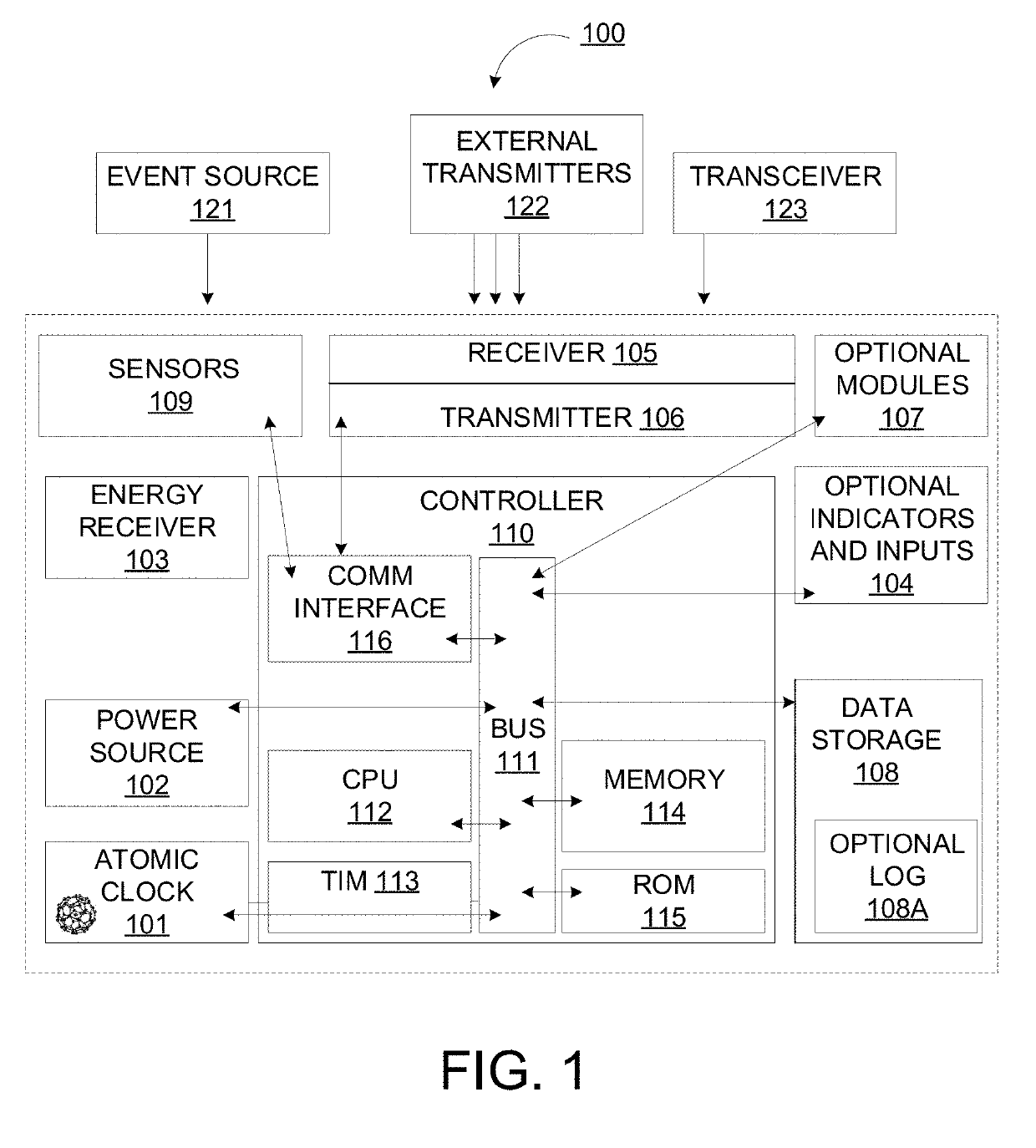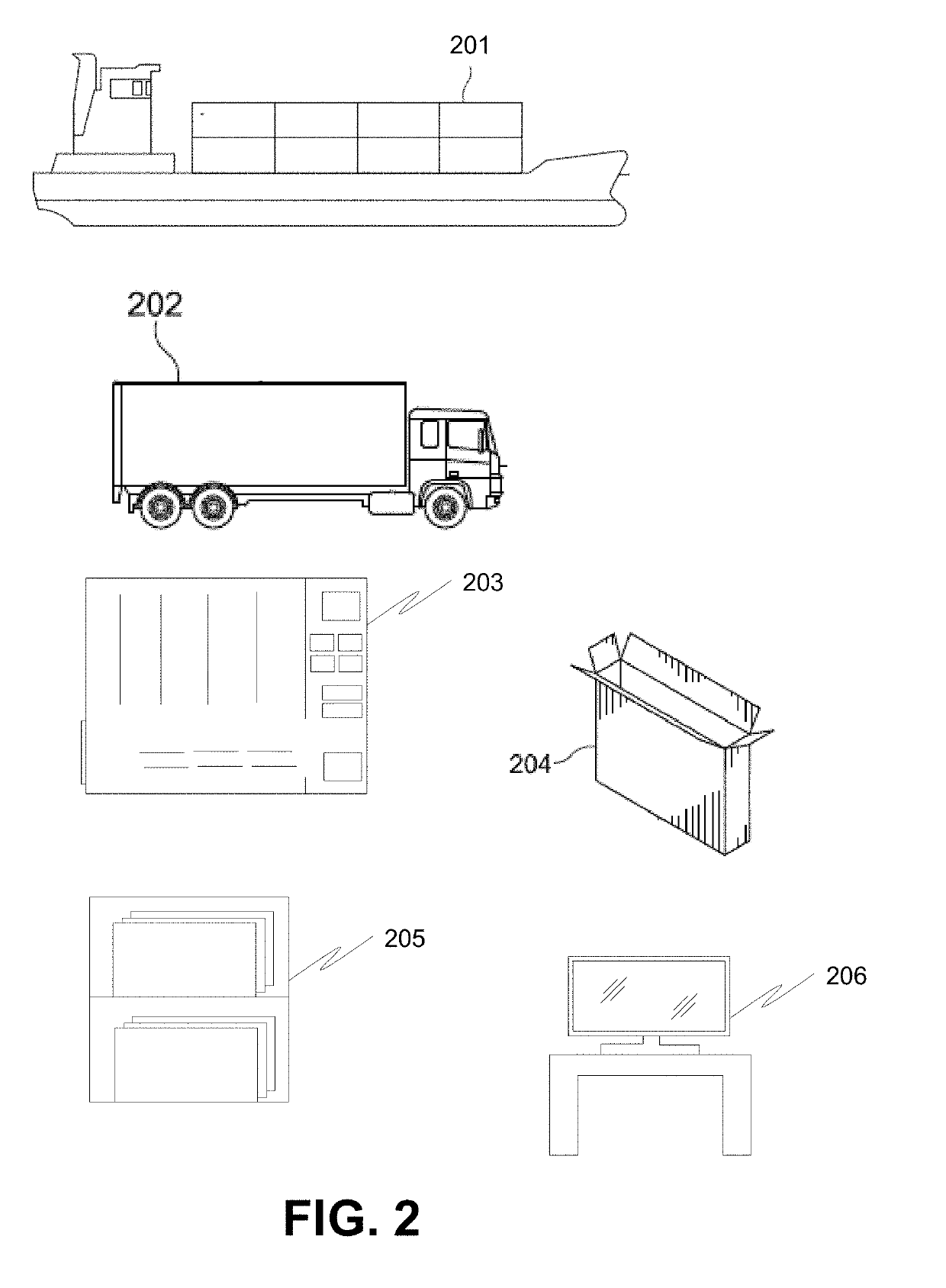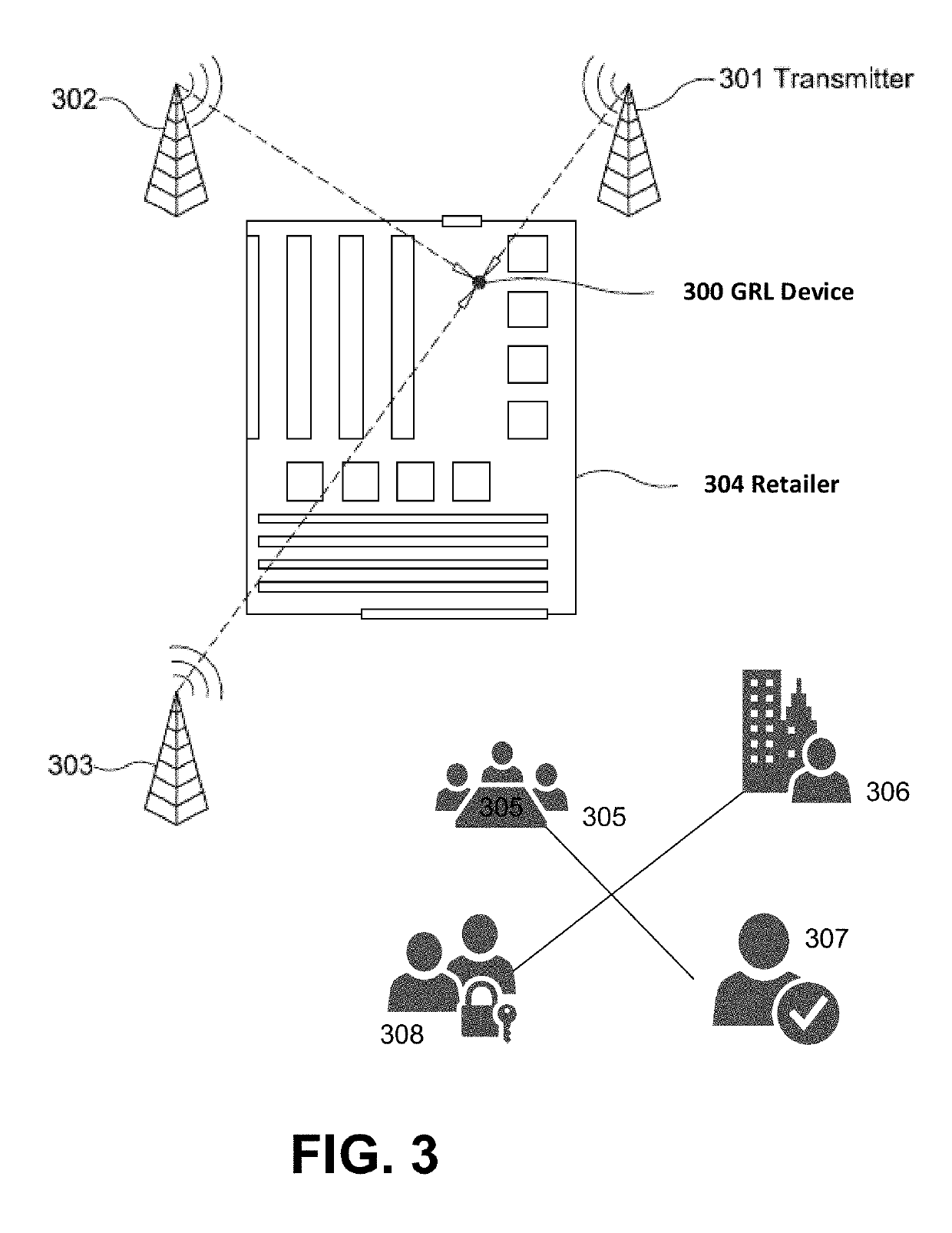Mini blockchain in a chip device and methods of utilization
a technology of mini-blockchain and chip, applied in the field of definable blockchain in a chip based, can solve the problems of not having an economic and efficient method of ascertaining such information, difficult to ascertain who a person admitted within a spatial domain has visited with or come into close proximity, and difficult to ascertain where within defined boundaries
- Summary
- Abstract
- Description
- Claims
- Application Information
AI Technical Summary
Benefits of technology
Problems solved by technology
Method used
Image
Examples
examples
[0454]GRL Devices add a new type of IOT Location Sensor to a set of Asset types commonly called IoTs Internet of Things. This can be accomplished by adding a MAC to an existing Motherboard or PCB Printed Circuit Board that has all the required remaining components as taught in FIG. 01. Once an IoT device has the GRL Device capabilities as defined in this filing, its value and utility for providing additional Authenticated Location information is greatly enhanced.
[0455]In the application of tracking a person within a national boundary, upon entry into a foreign country, a foreign national can be required to carry their passport with them during their stay in the foreign country. A GRL Device may be attached to the passport and an Atomic Clock, or other high precision timing device, included in the GRL Device may be used to provide very accurate, low power location of the passport and hence the foreign national admitted within the national borders.
[0456]In addition, the ability of a f...
PUM
 Login to View More
Login to View More Abstract
Description
Claims
Application Information
 Login to View More
Login to View More - R&D
- Intellectual Property
- Life Sciences
- Materials
- Tech Scout
- Unparalleled Data Quality
- Higher Quality Content
- 60% Fewer Hallucinations
Browse by: Latest US Patents, China's latest patents, Technical Efficacy Thesaurus, Application Domain, Technology Topic, Popular Technical Reports.
© 2025 PatSnap. All rights reserved.Legal|Privacy policy|Modern Slavery Act Transparency Statement|Sitemap|About US| Contact US: help@patsnap.com



